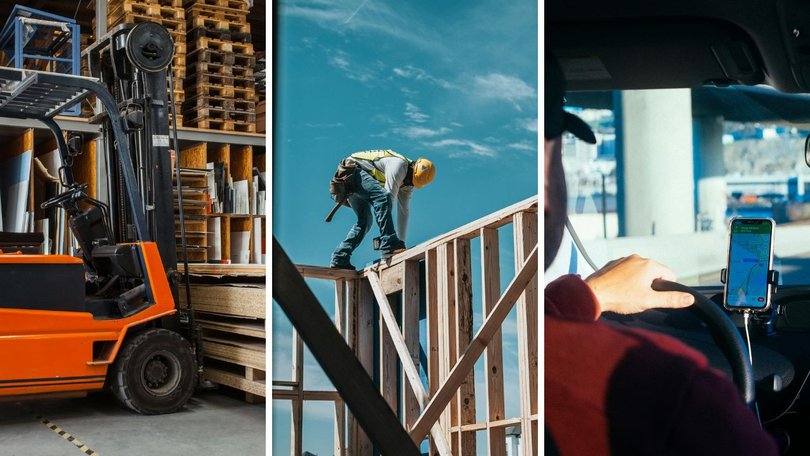New Safe Work Australia report reveals occupations where employees are dying at an alarming rate

The occupations where workers are most likely to die on the job have been revealed in a new report highlighting Australia’s most hazardous professions.
There were 188 workers who never made it home in 2024, a slight but positive decrease on the 200 fatalities in 2023.
Machinery operators and drivers accounted for 61 deaths last year, Safe Work Australia’s Key Work Health and Safety Statistics Australia report shows.
Sign up to The Nightly's newsletters.
Get the first look at the digital newspaper, curated daily stories and breaking headlines delivered to your inbox.
By continuing you agree to our Terms and Privacy Policy.These roles also had a fatality rate at 6.7 deaths per 100,000 workers, more than five times the national rate.
Alarmingly, 50 labourers were killed in workplace accidents last year, while 28 technicians and trade workers also died.
Of the 188 employee fatalities, 96 per cent were male.
Vehicle incidents were the leading cause of work-related deaths (79), while falls from height were blamed for 24.
When broken down by industry, 54 deaths were recorded within “transport, postal and warehousing”, and 44 lives were lost within agriculture, forestry and fishing. There were 37 fatalities in construction.
“The industries with the highest fatality rates were agriculture, forestry and fishing (13.7 fatalities per 100,000 workers), transport, postal and warehousing (7.4) and mining (3.4),” the report said.
In Australia’s mining sector, which is worth more than 12 per cent to the country’s GDP, there were 10 deaths.
While the number of Australians killed in workplace tragedies has declined, Safe Work Australia (SWA) said there is “still more to be done” to ensure employees make it back to their families.
“All workers have the right to safe and healthy work,” SWA chief executive Marie Boland said.
“Our data show there is still more to be done to ensure every worker, regardless of occupation or industry, returns home safely at the end of the day.”
Speaking on the figures, Australian Council of Trade Unions assistant secretary Liam O’Brien said even one death is “one too many”.
“A 24 per cent fall in the fatality rate since 2014 is welcome, but 188 families lost a loved one last year,” O’Brien said.
“One death at work is one too many and our job is far from done.”
The Key Work Health and Safety Statistics Australia report, released during National Safe Work Month, also highlighted that three in 10 workers who suffered an injury on the job received workers’ compensation.
The ACTU said there was a “large gap” between injury and compensation, with claims commonly not lodged “because the injury is seen as minor or ‘not necessary’, alongside uncertainty about eligibility and awareness issues”.
“Unions are alarmed that seven in 10 injured workers don’t receive workers’ compensation,” O’Brien said. “That points to barriers and under-reporting that hide the real cost of workplace injuries on Australian workers.”
Originally published on 7NEWS
